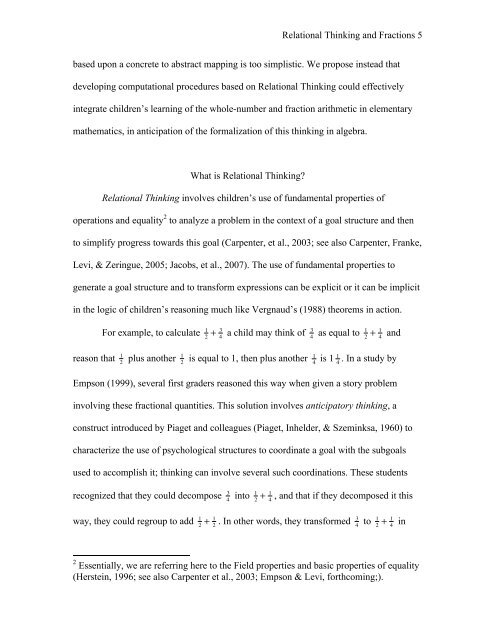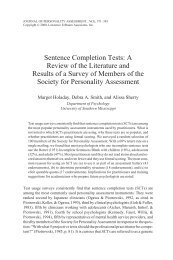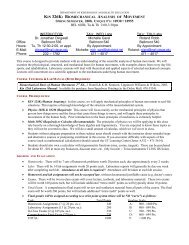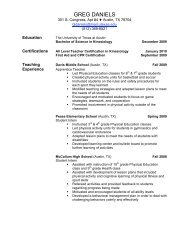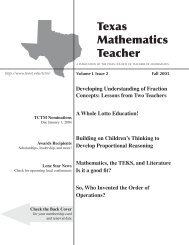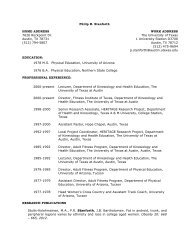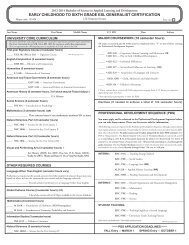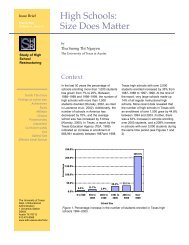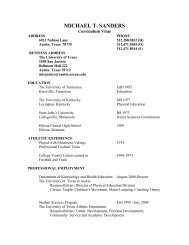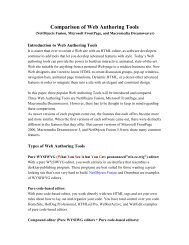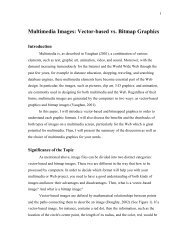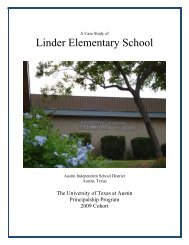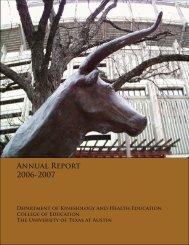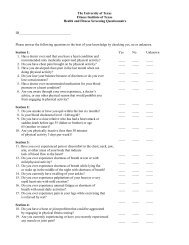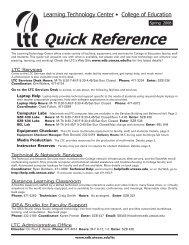The Algebraic Nature of Fractions: Developing Relational Thinking ...
The Algebraic Nature of Fractions: Developing Relational Thinking ...
The Algebraic Nature of Fractions: Developing Relational Thinking ...
You also want an ePaper? Increase the reach of your titles
YUMPU automatically turns print PDFs into web optimized ePapers that Google loves.
<strong>Relational</strong> <strong>Thinking</strong> and <strong>Fractions</strong> 5<br />
based upon a concrete to abstract mapping is too simplistic. We propose instead that<br />
developing computational procedures based on <strong>Relational</strong> <strong>Thinking</strong> could effectively<br />
integrate children’s learning <strong>of</strong> the whole-number and fraction arithmetic in elementary<br />
mathematics, in anticipation <strong>of</strong> the formalization <strong>of</strong> this thinking in algebra.<br />
What is <strong>Relational</strong> <strong>Thinking</strong>?<br />
<strong>Relational</strong> <strong>Thinking</strong> involves children’s use <strong>of</strong> fundamental properties <strong>of</strong><br />
operations and equality 2 to analyze a problem in the context <strong>of</strong> a goal structure and then<br />
to simplify progress towards this goal (Carpenter, et al., 2003; see also Carpenter, Franke,<br />
Levi, & Zeringue, 2005; Jacobs, et al., 2007). <strong>The</strong> use <strong>of</strong> fundamental properties to<br />
generate a goal structure and to transform expressions can be explicit or it can be implicit<br />
in the logic <strong>of</strong> children’s reasoning much like Vergnaud’s (1988) theorems in action.<br />
reason that 1<br />
2<br />
For example, to calculate 1 3<br />
2 + 4<br />
plus another 1<br />
2<br />
a child may think <strong>of</strong> 3<br />
4<br />
is equal to 1, then plus another<br />
1<br />
4<br />
1 1<br />
as equal to 2 + 4 and<br />
is 1<br />
1 . In a study by<br />
4<br />
Empson (1999), several first graders reasoned this way when given a story problem<br />
involving these fractional quantities. This solution involves anticipatory thinking, a<br />
construct introduced by Piaget and colleagues (Piaget, Inhelder, & Szeminksa, 1960) to<br />
characterize the use <strong>of</strong> psychological structures to coordinate a goal with the subgoals<br />
used to accomplish it; thinking can involve several such coordinations. <strong>The</strong>se students<br />
recognized that they could decompose 3<br />
4<br />
1 1 into 2 + 4 , and that if they decomposed it this<br />
way, they could regroup to add 1 1<br />
3<br />
2 + 2 . In other words, they transformed 4<br />
1 1 to 2 + 4 in<br />
2 Essentially, we are referring here to the Field properties and basic properties <strong>of</strong> equality<br />
(Herstein, 1996; see also Carpenter et al., 2003; Empson & Levi, forthcoming;).


